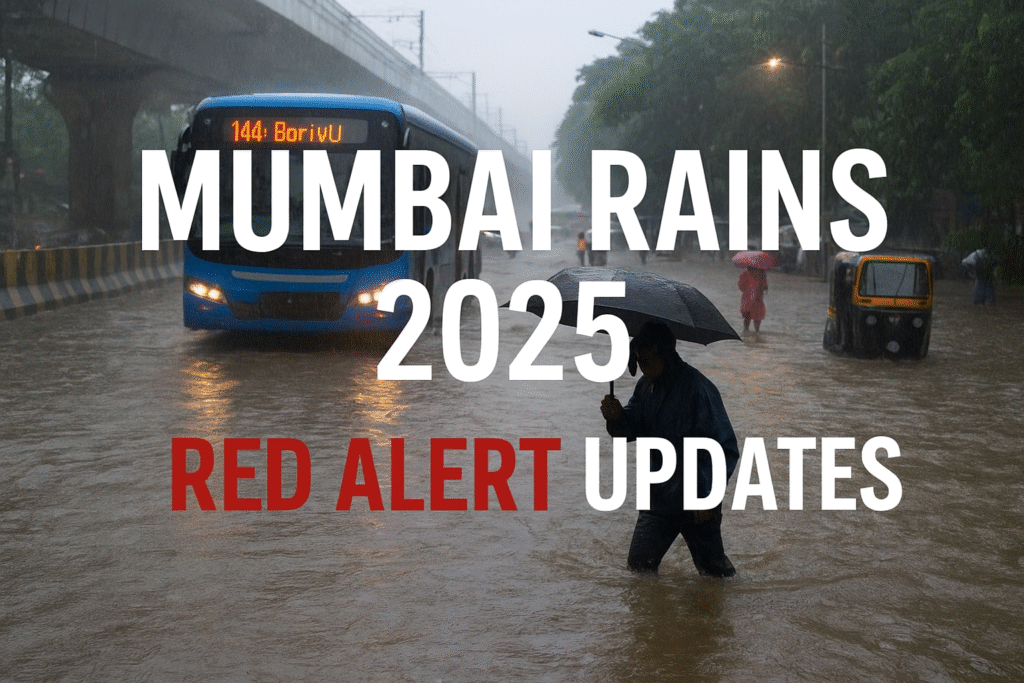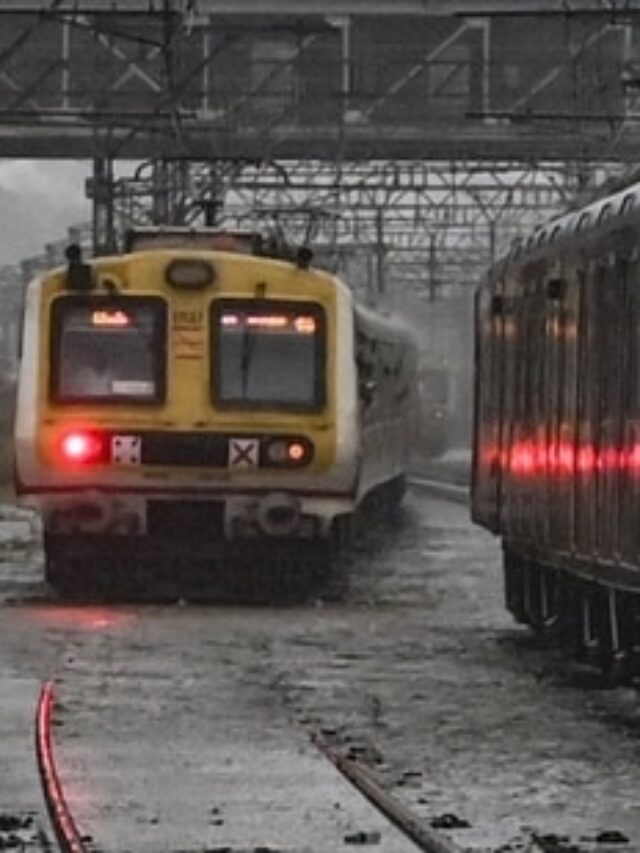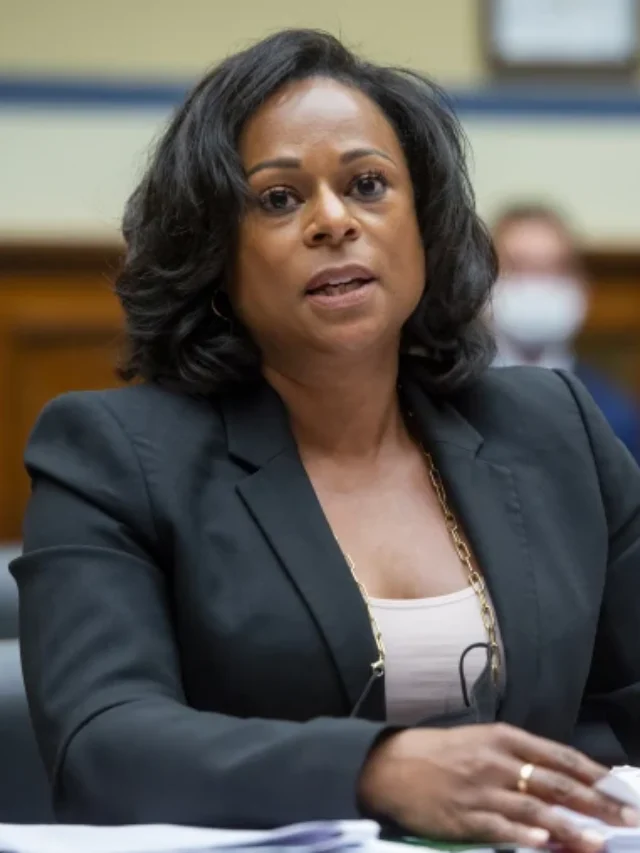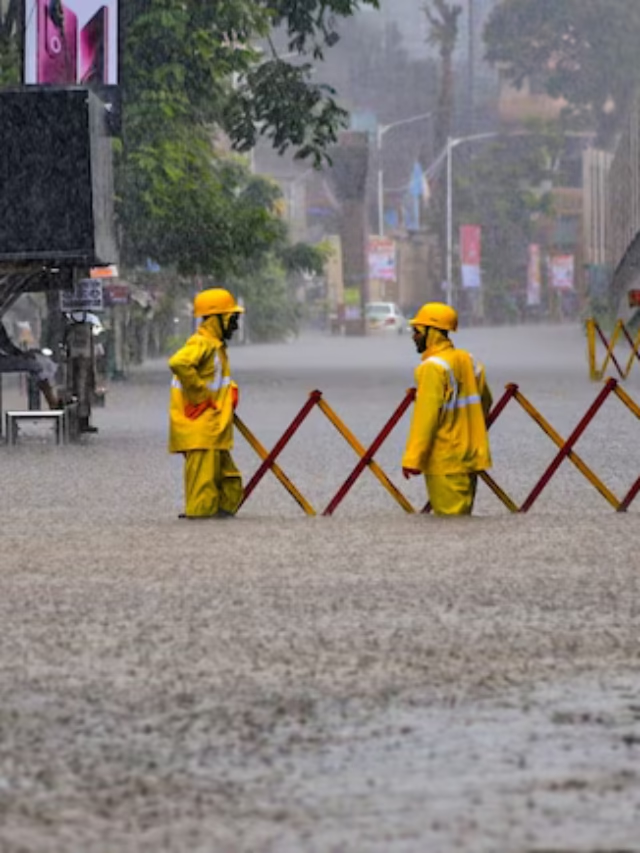
Summary: Between August 16–18, 2025, Mumbai experienced intense monsoon downpours — prompting red alerts, school closures, severe waterlogging and transport disruption. This report covers the on-ground impact, civic response, infrastructure resilience and the broader climate context.
1. Overview: Unrelenting Monsoon Disruption
August 16–18 marked a period of exceptionally heavy monsoon activity across Mumbai and neighbouring districts. The India Meteorological Department (IMD) issued Mumbai Rains 2025 upgraded alerts — including red and orange warnings — for Mumbai, Thane and Palghar. The sustained downpours forced civic authorities to declare school holidays, suspend or delay transport services and step up rescue operations. The intensity of rainfall over short spans exposed the limits of the city’s drainage infrastructure and underscored vulnerabilities in low-lying zones.
2. Impact on daily life: Commutes, education, and public safety
Education & student safety
The Brihanmumbai Municipal Corporation (BMC) ordered closures of schools and colleges for safety. Several institutions either canceled morning sessions or sent students home early as waterlogging worsened. Mumbai Rains 2025 In one worrying incident, a school bus carrying children became stranded on a flooded street; timely rescue by Mumbai Police ensured that the students and staff were evacuated safely.
Traffic, transport and commuting
Mumbai Rains 2025Low-lying neighbourhoods such as Andheri Subway, Lokhandwala, Chembur, Shivaji Nagar and Ghatkopar were severely waterlogged. Commuters faced disrupted journeys as arterial roads turned into temporary waterways. Localized flooding affected both private and public transport routes, causing heavy traffic snarls across the island and suburbs.
Rail and metro services
Mumbai’s suburban rail network, the city’s Mumbai Rains 2025 critical transport backbone, experienced delays up to 15–20 minutes in several services. Thousands of commuters reported extended travel times. In contrast, key metro corridors — especially the newer Metro Line 3 (Aqua Line) — mostly remained operational and served as a relatively reliable alternative for many commuters.
Flights and air travel
Mumbai Rains 2025 schedules were disrupted: airlines issued advisories and several departures and arrivals were delayed. In some instances, poor weather led to flight diversions and extended turnaround times at the airport.
3. Administrative response & safety measures
Authorities stepped Mumbai Rains 2025 up operations: the BMC deployed teams to clear stormwater drains, desilt critical channels and coordinate municipal machinery. The state government convened emergency review meetings at Mantralaya to oversee relief and preparedness. Public advisories urged residents to stay indoors, avoid non-essential travel and remain tuned to official weather and traffic updates.
Alert & communication
IMD’s issuance of red and orange alerts proved crucial in focusing civic action. Emergency services utilized social media, local news channels and traffic advisories to alert residents and provide real-time information on affected localities.
4. Infrastructure resilience: Metro vs roads
The contrast between rail/metro infrastructure and roads was stark. Roads and low-lying areas Mumbai Rains 2025 were overwhelmed by high flows and clogged drains, causing severe waterlogging. By contrast, modern metro corridors — built with elevated or protected alignments and improved drainage — demonstrated greater resilience, offering commuters a safer,Mumbai Rains 2025 drier alternative during peak disruption.
This difference highlighted the need for systematic investment in urban drainage, retrofitting of critical roads, and green infrastructure to reduce surface runoff.
5. Historical context & climate dynamics
To understand the present crisis, it’s important to place it in a broader historical and climatic context. Earlier in the season, Mumbai experienced record-breaking events that tested the city’s defences. Rapid urban growth, shrinking green cover, and increased impermeable surfaces combined with changing monsoon patterns to increase the incidence of localized urban floods.
Climate models and IMD observations show a trend toward more frequent intense rainfall events in peninsular and central India — a pattern consistent with global climate projections for the region. Planning for the future demands both mitigative and adaptive strategies.
6. Looking ahead: Forecast and preparedness
Short-term IMD forecasts indicated heavy rainfall spells continuing into late August. Residents were advised to follow official advisories, keep Mumbai Rains 2025 emergency numbers handy and avoid waterlogged routes. Civic agencies emphasized drain desilting, clearing of choke points and public awareness.
Over the medium term, the city must pursue upgraded drainage capacity, larger retention and infiltration zones, and resilient transport alternatives — policies that combine engineering upgrades with nature-based solutions.
7. Conclusion: A climate wake-up call
The monsoon crisis in August 2025 is a reminder of the dual pressures of urbanization and climate variability. While prompt rescues and operational metro lines offered some relief, the episode exposes systemic gaps in drainage, emergency response, and urban planning. Mumbai’s resilience depends on integrated policy Mumbai Rains 2025 action, infrastructure investment and community-level preparedness. The monsoon is relentless — but the crisis is also a policy moment: to invest in a safer, more resilient city.
If you are in an affected area: follow local authorities’ instructions, keep emergency contacts ready, avoid wading into floodwaters, and use official channels for help and information.
Editor’s note: This article was prepared using official weather advisories and on-ground reporting as of August 18, 2025. Replace the featured image URL, Mumbai Rains 2025 author name, publish date and any local details before publishing.










